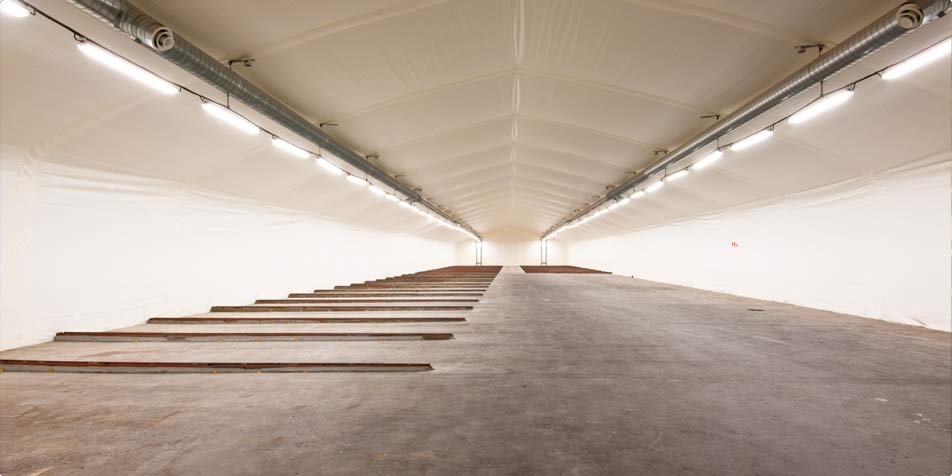Located inside the mountain in a former NATO ammunition depot (the largest in northern Europe)
Built for the highest military security level. Secured against electromagnetic pulses (EMP)
"Nuclear secure" facility, secured against sabotage and direct attack from the sea.
The Green Mountain Data Center contains nine ‘Mountain Halls’—each spanning well over 1,000-square-meters of space to host rows and rows of servers—a workshop, and an administration building. Its servers will be hooked up to an uninterrupted supply of power from a total of eight independent generators as well as three supply lines connected to the central Norwegian network, and its carbon footprint has been thoroughly eliminated.
Of course its most compelling feature, aside from its generally pleasant, Hobbit-like atmosphere noted by Gizmodo, is the cooling system, which relies on the nearby Rennesøy fjord to provide an abundance of cold water year round to cool its resident motherboards. Facebook has gone a similar route by planting a server farm in the Arctic, but we wouldn’t be hard pressed to say that we like the hospitable environment of this data farm better, and it’s nice to see yet another Scandinavian mountain bunker to add to our favorites!
The Mountain Hall
Approx. 21,500 m2 floor space in the mountain
The areas consists of:
– 6 mountain halls each of 1,855 m2
(11 x 164 m each) in size
– 2 mountain halls of 1,546 m2 (19 x 82 m each) in size
- 1 Mountain hall with internal structure 1,370 m2 in size
- I.e. combined mountain halls of 15,692 m2
- Warehouse/workshop 520 m2
- Administration building 840 m2
- Quay w/"roll on-roll off" option
Fire safety and fire
protection
Closed caverns enable the use
of inert / hypoxic air ventilation
Reduced oxygen level to prevent fire and smoke
- 02 reduced to 15 -16 %
- Fire cannot arise as the combustion process
does not get enough oxygen
- Corresponds to an altitude of approx. 3,000 m
Hypoxic air ventilation/Inert ventilation system
- Reduces/limits smoke formation
- Prevents combustion/fire
- Ensures continuous operation
- No fire damage
- No secondary extinguishing damage (corrosion,
harm to the environment, poisoning, etc.)
- No problems with hard disks due to the triggering
of fire extinguishing equipment
Safe as a vault
Located inside the mountain in a former NATO
ammunition depot (the largest in northern Europe)
Built for the highest military security level
- Secured against electromagnetic pulses (EMP)
- "Nuclear secure" facility
- Secured against sabotage and direct attack
from the sea
"Best in class" data security
Communication
- redundancy
High capacity and redundancy
Local broad band operators
Good connectivity to the world
Multiple high capacity lines to Oslo
Multiple high capacity lines directly to the UK
Multiple high capacity lines to continental Europe
Carrier neutral availability











No comments:
Post a Comment